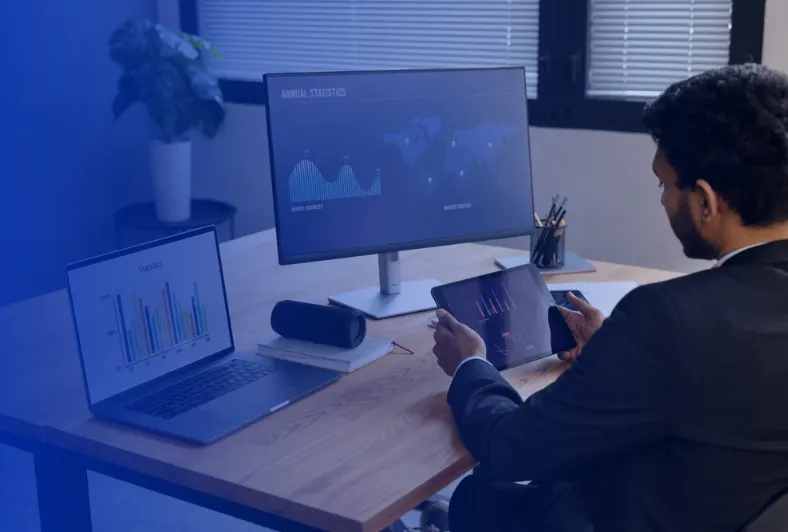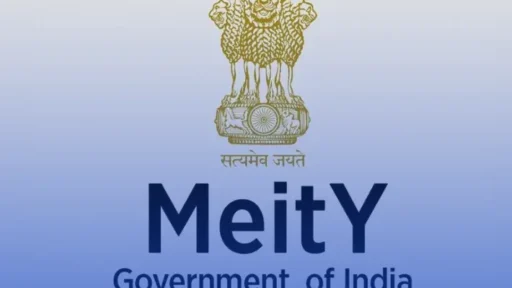Organizations in today’s data economy are enabling exciting complexities by sharing data with cloud service providers, CRM systems, email services, and other third-party vendor relationships to process customer data. This presents significant opportunities, and significant responsibilities. The ability to satisfy privacy, security, and legal compliance responsibilities across these third-party data processing relationships is a must-have in any jurisdiction where we have contemporary privacy laws, such as with India’s Digital Personal Data Protection Act (DPDPA), the European Union’s (EU) General Data Protection Regulation (GDPR), and Vietnam’s Personal Data Protection Law (PDPL).
As organizations work towards ticking all of the boxes related to their regulatory obligations, one or both of the following terms may come up: Data Protection Impact Assessment (DPIA) and/or Processing Impact Assessment (PIA). While these terms have a very similar name, they are providing two very different (but complementary) outcomes to the data governance landscape.
Also, This article discusses the important differences between the two distinctions, stresses the mandatory nature of PIA under Vietnam’s PDPL, and provides practical advice for business using cloud services or outsourcing data processing.
What Is a Processing Impact Assessment (PIA)?
A Processing Impact Assessment (PIA) serves as an operational assessment that a business leads to evaluate the risks associated with a specific data processing activity, especially when the business outsources the processing to a third party (e.g. cloud service provider, data analytics platform, or customer engagement tool).
Unlike a DPIA, which extensively focuses on compliance and the fundamental rights of data subjects, a PIA emphasizes practical risk exposure: technical vulnerabilities, contractual protections, access management, data location, and the management of sub-processors.
A PIA functions like a control-room dashboard: it enables data controllers to track where their data flows, identify who interacts with the data, pinpoint the systems involved in processing, and anticipate what could go wrong — from security breaches to compliance gaps.
Key Characteristics of PIA:
- Focuses on operational risk and/or third-party risk exposure
- Examines data processing environments, essentially the processors or vendors
- It covers security, data retention policies, access controls, sub-processor management, and business continuity
- Usually used for vendor onboarding, regular audits, or contract review
Mandatory Under PDPL (Vietnam)
Vietnam’s Personal Data Protection Law (PDPL) was enacted in June 2025 and will take effect on July 1, 2026, following a one-year transition period. Under the PDPL, organizations must conduct and submit two types of assessments to the Ministry of Public Security (MPS):
- Purpose and type of processing
- Type of data processed
- Details of data sharing
- Risk mitigation measures
- Cross-border transfers
So, these assessments must be submitted to the MPS within 60 days of starting the processing or transfer and kept up-to-date throughout the data lifecycle. However, This makes Vietnam’s regime one of the most rigorous impact assessment frameworks globally.
What Is a Data Protection Impact Assessment (DPIA)?
A Data Protection Impact Assessment (DPIA) is a formalized legal and ethical evaluation of a processing activity’s impact on individuals’ rights and freedoms, especially concerning their personal data.
When activating a DPIA, GDPR (Article 35) mandates that a DPIA is required when the data processing involves a “high risk to the rights and freedoms of individuals”, which can include:
- Large-scale surveillance or profiling
- · Processing sensitive personal data (e.g., health, religion)
- · Use of new technologies, particularly AI or automated decision making
DPIA does not only consider system security or vendor controls. It asks, for example:
- Is this processing proportionate?
- Are any individual’s rights being restricted?
- What safeguards would reduce risk to personal dignity or autonomy?
Key Characteristics of DPIA:
- Legal compliance tool targeting data subjects’ rights against privacy risks
- Involving Legal, Ethics and Technical teams
- Emphasizing risk mitigation and data minimization
- Intended to be published or submitted to supervisory authorities
PIA vs DPIA: Key Differences at a Glance
| Feature | PIA (Processing Impact Assessment) | DPIA (Data Protection Impact Assessment) |
| Focus | Operational and vendor processing risk | Risk to data subjects’ rights and freedoms |
| Audience | Internal privacy, IT, procurement teams | Privacy teams, legal counsel, regulators |
| Trigger | Outsourced data processing, cloud vendor use | High-risk processing (e.g., profiling, AI, health data) |
| Mandate | Mandatory under PDPL (Vietnam) | Mandatory under GDPR, DPDPA (in certain conditions) |
| Goal | Evaluate processor controls, security, data flows | Assess and reduce privacy risks to individuals |
| Format | Risk matrix, processor audit, security control checklist | Legal analysis with risk classification and mitigation plan |
| Outputs | Operational risk rating, processor recommendations | Privacy risk statement, legal justification, and safeguards |
Why Businesses Must Conduct PIAs (Even Beyond Legal Mandates)
Even when not mandated by law (like in India’s DPDPA), a PIA is increasingly becoming a privacy best practice for:
- Enterprises using a number of cloud vendors and sub-processors
- Startups building on top of SaaS platforms or APIs
- Financial services or health-tech firms processing sensitive data
- Multinationals operating in a cross-border data transfer environment
By conducting a PIA, you can:
- Identify hidden security gaps in your data processor ecosystem
- Ensure contract clauses match real-world practices
- Avoid vendor lock-in or unanticipated data access risks
- Meet audit and regulator readiness with documentation in place
Core Components of a PIA (Processing Impact Assessment)
When conducting a PIA, especially during onboarding or annual review of a processor, focus on:
1. Data Flow Mapping
- What data is being collected?
- Where is it stored, transmitted, and processed?
2. Contractual Safeguards
- Is there a Data Processing Agreement (DPA)?
- Are sub-processors disclosed and controlled?
3. Security and Technical Controls
- Encryption at rest and in transit
- Access control and privilege management
- Logging, monitoring, and threat detection
4. Data Lifecycle Management
- How is data deleted?
- What’s the data retention policy?
- How are backups secured?
5. Jurisdictional and Cross-Border Risks
- Where is data stored or transferred?
- Are there risks of government access or surveillance?
6. Business Continuity and SLA Assessment
- Uptime guarantees
- Incident handling and disaster recovery readiness
7. Auditability and Documentation
- Are audit logs available?
- Are privacy certifications (ISO, SOC 2, etc.) available?
8. Residual Risk Rating
- Assign Likelihood x Impact matrix
- Recommend controls for reducing risk
Relationship Between PIA and DPIA
The PIA and DPIA are distinctly different; however, they are not incompatible. Cumulatively, both assessments could be required for many high-risk processing activities.
- PIA is used to assess the processor’s systems, security and contracts
- DPIA is used to assess the privacy risk to individuals that is created solely by the processing
PIA is a regulatory requirement in Vietnam and, DPIA is a requirement in the EU by GDPR. Under the DPDPA 2023 in India, there are risk mitigation requirements in Section 10, but no requirement for a designated DPIA, although it is strongly recommended for high-risk processing.
DPIA and PIA might be different in fact, they have a number of substantial similarities as foundational components to effective privacy management program. They both provide tools to assess, understand and mitigate risks related to activities involving personal data processing, and also support the overarching accountability and compliance with statutory obligations associated with data protection legislation. Each process encourages the consideration of privacy and security impacts as early as possible in the lifecycle of data processing, before implementing or operating new system(s), involving third parties, or commencing any processing activities.
PIA and DPIA also have the common theme of promoting privacy by design principles, valuing interdisciplinary teamwork (utilities include legal, IT and procurement as well as privacy), and they end up with a documented assessment for evidence of due diligence in the event of an audit or regulatory assessment. Overall, while a DPIA ultimately protects the rights and freedoms of individuals and a PIA focuses on operational and vendor risk, they are designed to be complementary tools that can be used together to gain a full understanding of data risks.
Action Plan for Business Organizations
If your organization is evaluating or working with data processors (especially cloud-based platforms), here’s what you can do:
- Develop a consistent template for Processing Impact Assessment
- Conduct PIAs consistently before onboarding any data processor or sub-processor
- Review the PIA at least once every calendar year or when there are material changes (i.e., new data categories, new sub-processors)
- Conduct a Data Protection Impact Assessment (DPIA) where the processing is considered high risk at the same time as a PIA
- Stay informed about local laws (e.g., PDPL, DPDPA, GDPR) that may require an assessment, filings, or documentation
So, as privacy regulations continue to ascertain their influence around the world, organizations must pivot from reactive compliance to proactive risk management. Conducting a Processing Impact Assessment (PIA) is the first step on this journey, particularly businesses that are dependent on a third party data processor.
If a DPIA is intended to protect individual rights, then, a PIA is intended to protect your operational resilience and accountability. Together, are a holistic approach to responsible data stewardship.

Rakesh Singh
AuthorAt Dharmashastra National Law University, Rakesh is completing the final year of legal studies with a clear vision: to navigate and shape the frontiers where law meets technology. With a strong interest in Data Protection, TMT Law, IPR, and Dispute Resolution, Rakesh is passionate about finding innovative legal solutions to the challenges of our connected age.









